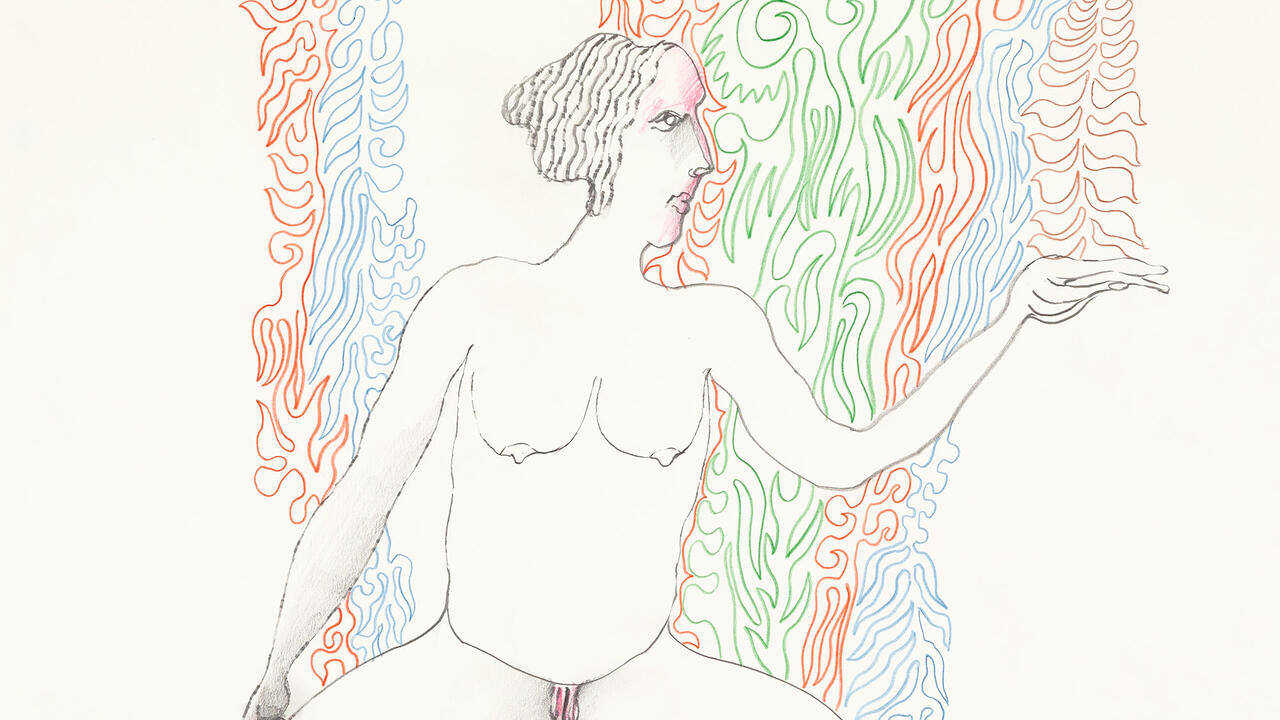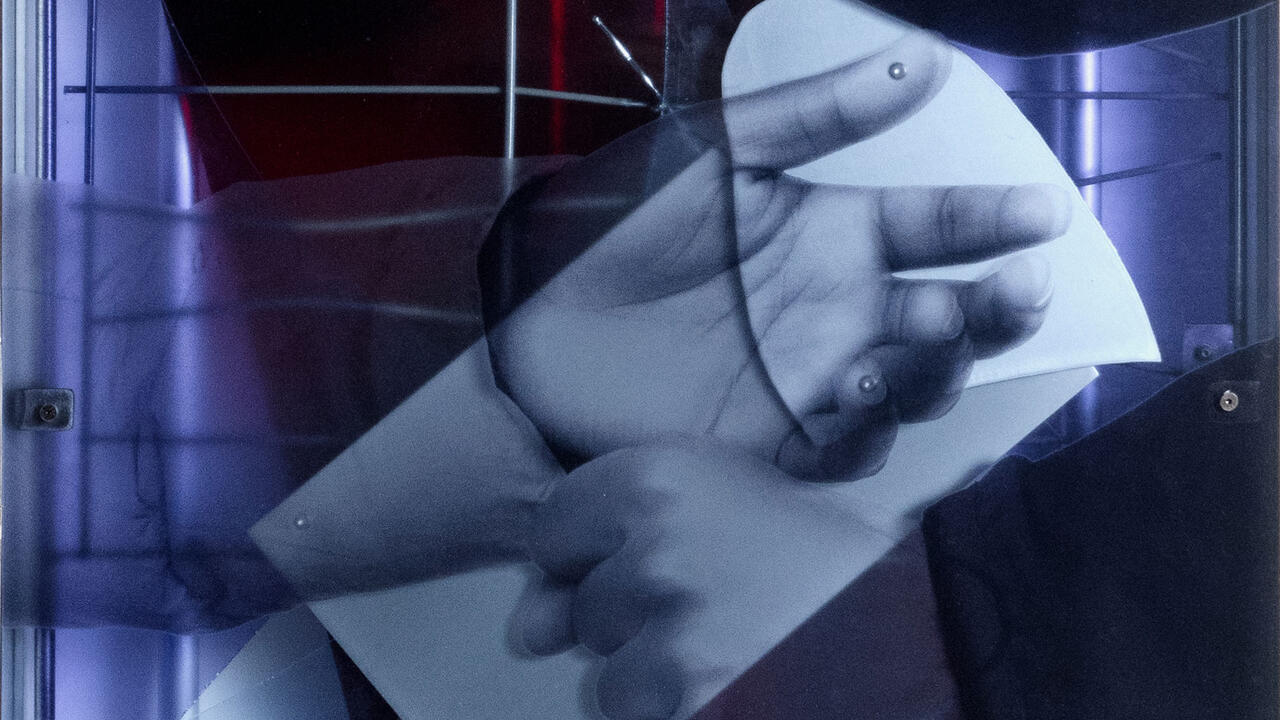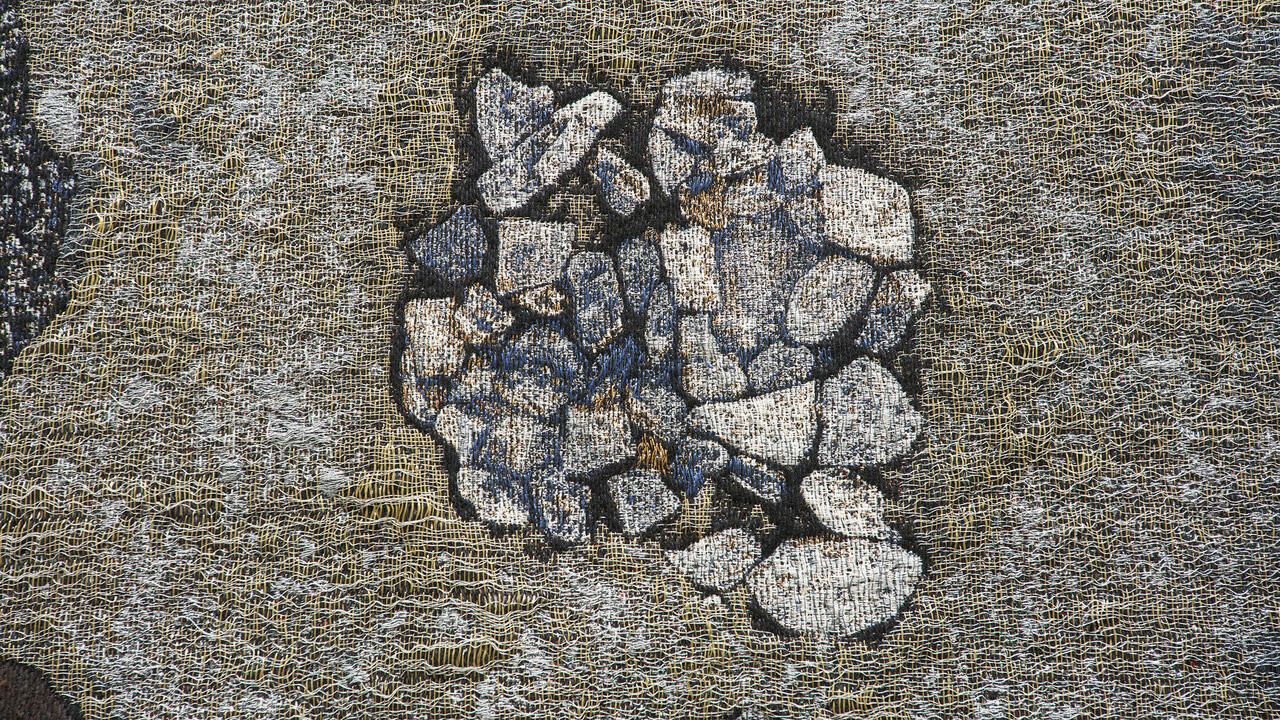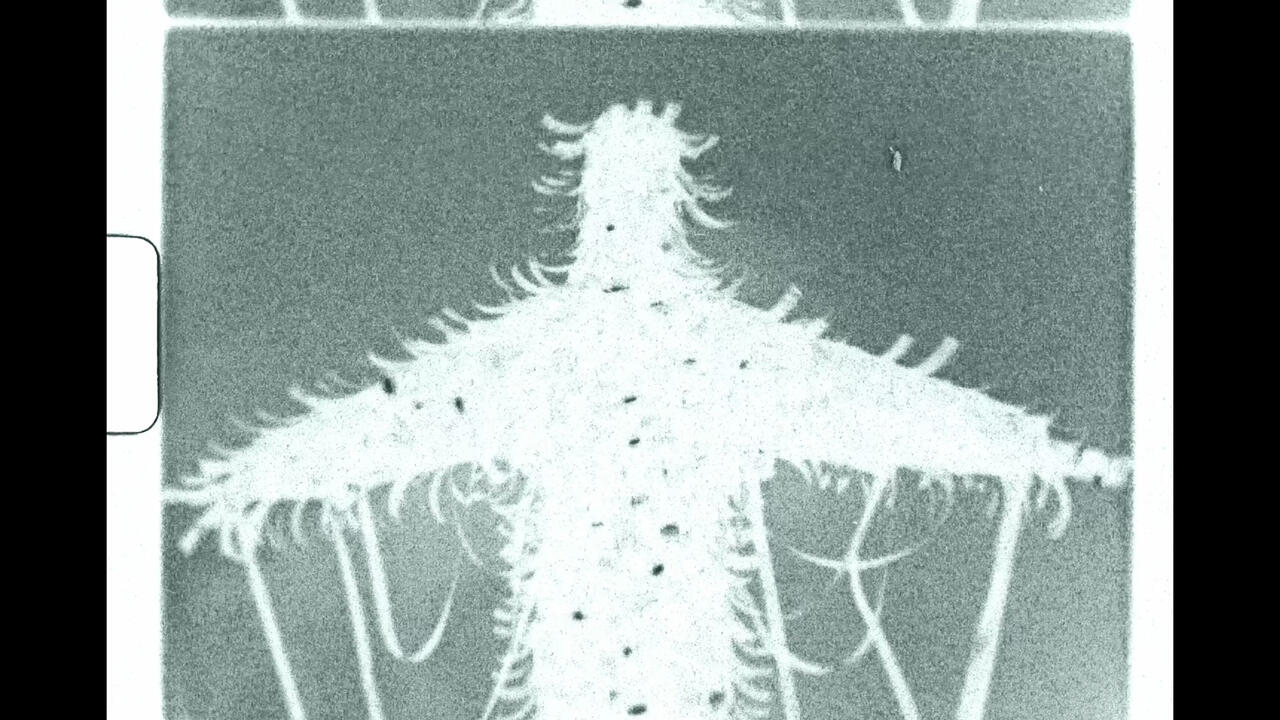Noa Eshkol’s Orchestra of the Body
At neugerriemschneider, Berlin, an exhibition dedicated to the late dance composer’s notation system reveal the complexities of her ideas
At neugerriemschneider, Berlin, an exhibition dedicated to the late dance composer’s notation system reveal the complexities of her ideas

While studying dance at Trinity Laban Conservatoire in London, I took modules in choreology – the discipline of movement analysis – focusing on the notation system and theories of 20th century choreographer Rudolf Laban. My fellow students and I often questioned the contemporary relevance of these techniques, given that we could film ourselves on our smartphones during rehearsals. Our teachers assured us, however, that Laban’s notation system captures choreographic intention more clearly than any video and can be used to facilitate new ways of analyzing and devising movement.

Nowhere is this more evident than in the work of Israeli dance composer and textile artist Noa Eshkol whose ‘movement notations’ are currently the subject of a titular exhibition at Berlin’s neugerriemschneider. Originally trained as a pianist, Eshkol, who died in 2007, was convinced that dance needed a comparable notation system to music in order to develop new, complex combinations of movement. As a result, after studying at Laban’s Art of Movement Studio in Manchester during the 1940s, she returned to Israel to develop the Eshkol-Wachman Movement Notation system, in collaboration with architect Avraham Wachman.

Surprisingly, only a couple of examples of Eshkol’s manuscripts – grid-like matrixes covered with numerals and symbols representing her compositions – are on display in ‘movement notations’. Instead, diagrams by Eshkol’s collaborators illustrating her key thoughts and theories take precedence. Her aim to simplify the properties of limbs, for example, is encapsulated in an ink on parchment drawing by the artist John G. Harries, which depicts an abstract human form in a neutral standing position (The abstraction of body parts – seen as a structure of lines. Body in (0) position, all works c.1950). The figure is composed entirely of straight lines, while the blank spaces between indicate joints and allude to Eshkol’s conception of body parts as independent entities, separate instruments in the orchestra of the body.

Elsewhere, the diagrams become more complex. For example, Harries’s Type of movement: conical movement depicts a figure surrounded by large cones and circulating arrows to show the possibilities for circumduction and rotation in different body parts. More difficult to decipher, however, are Wachman’s drawings of water motor-like forms, composed of intersecting rectangles and spheres with irregular segments shaded in black and red. (Mesh and metal 3D representations of the latter, titled Models of Orbits in the System of Reference, 3 parts’, hang from the gallery ceiling.) Fascinating in their complexity, Wachman’s illustrations tantalize sophisticated concepts yet could benefit from supportive explanations to enable viewers to delve deeper into the ideas they represent.

Eshkol’s theories gain greater clarity when observed in practice and, to coincide with the opening of ‘movement notations’, The Chamber Dance Group – the current iteration of Eshkol’s Chamber Dance Quartet founded in 1954 – performed ten excerpts from the choreographer’s oeuvre at the nearby KW Institute for Contemporary Art. To the sound of a ticking metronome, the dancers simultaneously tapped their heels, rolled their wrists, splayed their fingers and twisted their spines in opposing directions. Their limbs appeared to have agency, independently exploring their own circular orbits as opposed to following commands from the dancers’ brains.

While videos of performances and rehearsals from 1950–93 are played on a loop at neugerriemschneider, seeing Eshkol’s compositions performed live reveals the extent of ideas there are to unpack in her work – from how the slightest head tilt or change in tension in a limb can completely alter a movement’s aesthetic, to how choreography intended as abstract can provoke emotional readings. The incredible detail and focus on the isolation of limbs – my own training placed greater emphasis on connectivity – is unlike anything I’d seen before. By sitting down, theorizing and notating, Eshkol created fascinating possibilities for movement that would probably never have emerged had she just whipped out a camera phone.
Noa Eshkol’s ‘Movement Notations’ is on view at neugerriemschneider, Berlin, until 28 October.
Main image: Noa Eshkol, 90 Degree Circles, 1975, cotton, synthetic fiber, 162 × 138 cm. Courtesy: The Noa Eshkol Foundation for Movement Notation, Holon, and neugerriemschneider, Berlin; Photo: Jens Ziehe






















